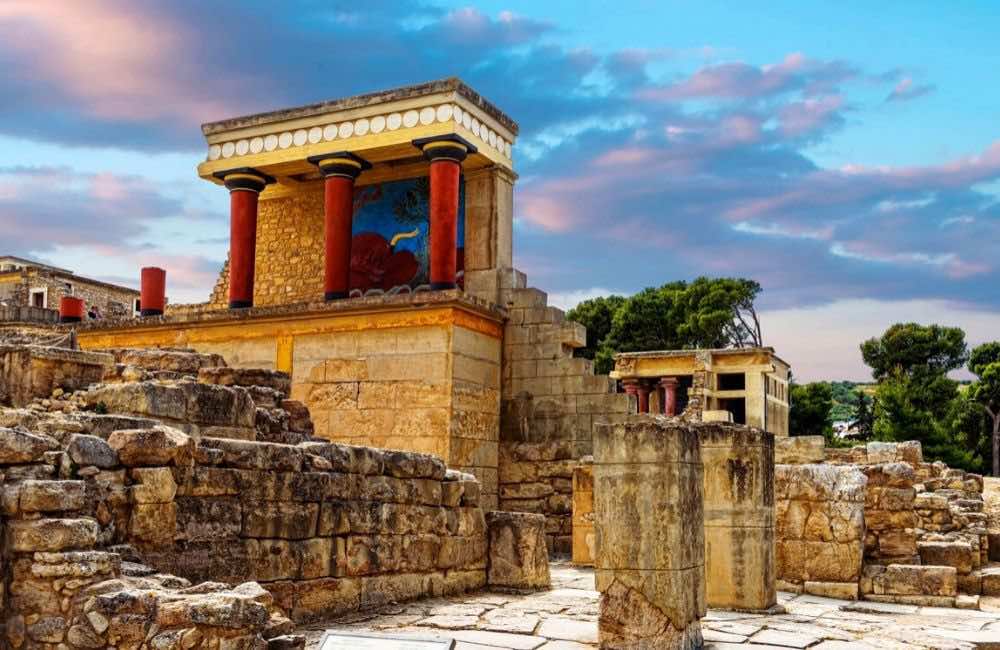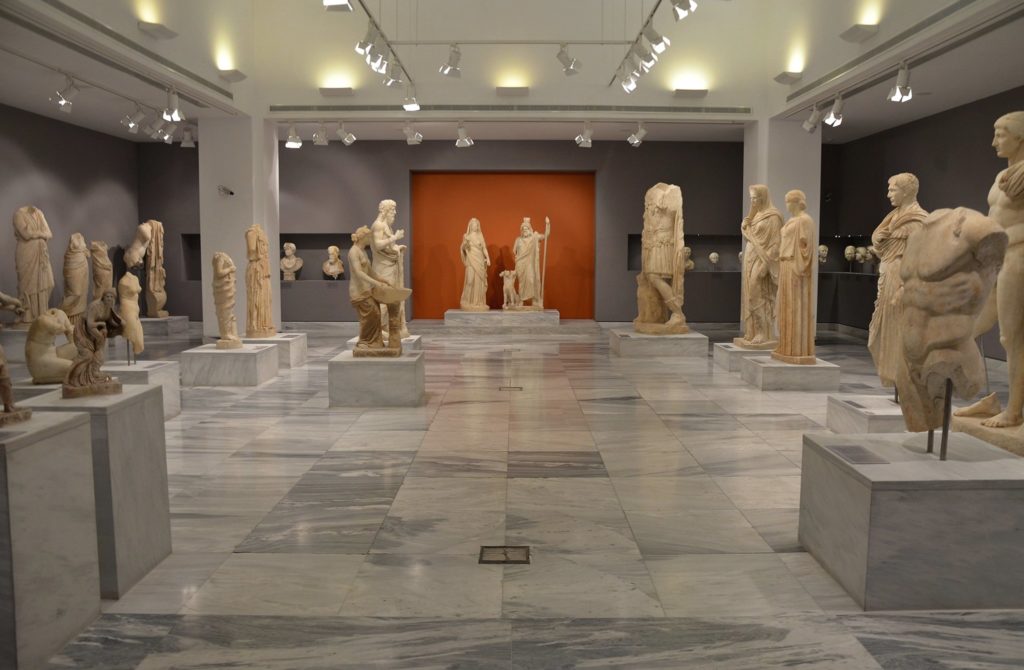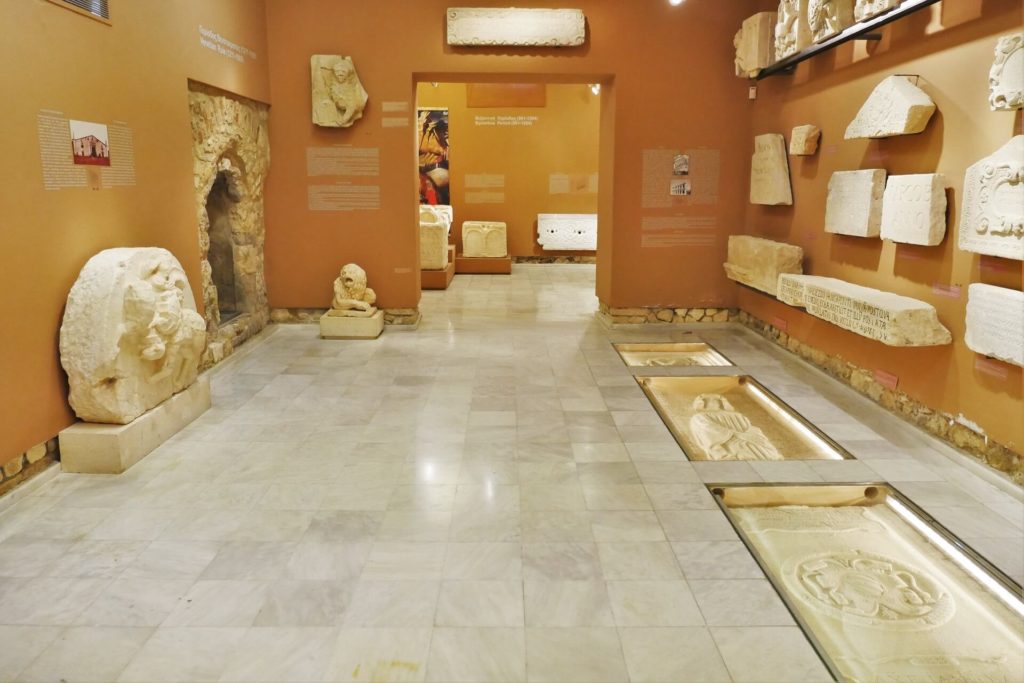CITY GUIDE
Whatever brings you to 3 Pines Design Living, a leisurely vacation, or a business trip, there are countless opportunities for exploration, recreation, and taking a generous dose of local culture and history in Heraklion and the island of Crete.

Tria Pefka
Tria Pefka, is a lively neighbourhood with colourful cafés, shops, restaurants, and all the facilities you might need during your stay (bank, grocery stores, bakeries, pharmacy stores, pastry shops, hair-dressers, etc). Just a few meters from 3 Pines there is a Taxi station to pick up a taxi if you need to, while the historic centre of Heraklion, where the heart of the city is beating, is within walking distance (15’-20’ approximately). 3 Pines Design Living has locality at the heart of its philosophy, and encourages you to sample life as a local during your stay.

Knossos Minoan Palace
Knossos is the most important archaeological site in Crete, and is located barely 5km south of Heraklion. It was the centre of the Minoan civilization that flourished on the island during the Bronze Age. The complex palace that was the seat of almighty King Minos is intertwined with the myths of the Labyrinth, the Minotaur, and Daedalos & Icaros. Knossos is a must-visit site, along with the Archaeological Museum of Heraklion. More info about admission costs & opening hours: http://odysseus.culture.gr/h/3/eh355.jsp?obj_id=2369

Archaeological Museum of Heraklion
The Archaeological Museum of Heraklion is regarded as one of the most important museums in Greece and Europe. The awarded Bauhaus building which is located in the centre of the city houses artefacts from all the periods of Cretan prehistory and history. The Minoan collection is the most important of all, containing true masterpieces of Minoan Art: jewellery, frescoes, pottery, religious figurines, etc. If you plan to visit Knossos as well, a combined ticket is available at a special price which can be used for 3 days after the first entrance in either of the sites. You can buy your e-ticket here.

Historical Museum of Crete
The turbulent history of Crete, from early Christian times until the mid-20th century is represented in the Historical Museum of Crete which is housed in a beautiful neoclassical building at Heraklion’s coastal avenue. Apart from the permanent collections (ceramics, sculptures, numismatics, Byzantine art, Ottoman collection, World War 2 collection, and ethnographic collection), the museum also features the only two works by El Greco on display in Crete, and a collection dedicated to the famous Cretan author Nikos Kazantzakis. Occasionally the museum hosts modern art exhibitions as well.

Natural History Museum of Crete
The Natural History Museum of Crete presents the natural environment of the eastern Mediterranean area, with special emphasis on Crete and Greece. Housed in an industrial building that used to be the first Electricity Factory of Heraklion, at the city’s coastal avenue, the Natural History Museum of Crete which has been recently partly renovated, showcases representations of ecosystems found in the eastern Mediterranean region, a small “living museum”, and other exhibitions. Do not miss the “seismic table”, an earthquake simulator that allows you to experience notorious real earthquakes of the past, in a safe environment.

Koules & Venetian harbor
Monuments from the era of the Venetian rule of Crete remain scattered across the historical centre of Heraklion until today (Loggia, Morosini fountain, the Venetian walls, and more). The old harbour is perhaps the most iconic Venetian landmark of Heraklion. The Arsenali Antichi and Arsenali Nuovi, the shipyards of the Venetians, the water tank of Zane, and the salt warehouse are some of the most Venetian monuments that have survived until our days. Koules or Rocca a Mare, the imposing fortress at the entrance of the old port, was constructed by the Venetians in the early 13th century and is now open to visitors. It has various exhibition areas and offers great views from the upper floor.
Traveler Information
Water
Heraklion’s water is not fit for drinking, but it is fine for bathing, and for washing your teeth, your clothes, and your dishes. We kindly advise you to drink strictly bottled water.
Electricity
Greece operates on a 230V supply voltage and a 50Hz frequency. Depending on your country of residence, if you’re visiting Crete, you might need a power plug adapter or voltage converter for your electric appliances.
Parking
Finding a free parking space on the street in downtown Heraklion, especially during busy hours, is a challenge. We highly recommend that you park your car in the area of 3 Pines and walk to the city center (it’s more or less a 15’ walk), or you can pick one of the paid parking spots all over the city. Municipal parking areas have lower rates.
Transportation
Iraklio Urban Buses cover most areas around the city and frequent routes to/from the city hospitals, the port, the airport, and Knossos. You may even visit nearby beaches (Amnissos & Ammoudara) by bus, but keep in mind that these lines may be too crowded. Also, some routes (Knossos, Airport) are more frequent than others (Ammoudara, Amnissos).
Hospitals
There are two public hospitals in Heraklion: Venizeleio Hospital (Knossou Ave. 44, +30 2813 408000), and PAGNI Hospital(Voutes, +30 2813 402111). The two hospitals alternate shifts every day. To see which of the two is on duty, please visit their websites.
Taxi
Taxis in Heraklion are grey. The average rate for a taxi transfer from the airport/port of Heraklion to the city center is €15. You can pre-book your taxi, but it’s not necessary, as there are always plenty of taxis available at the airport.


